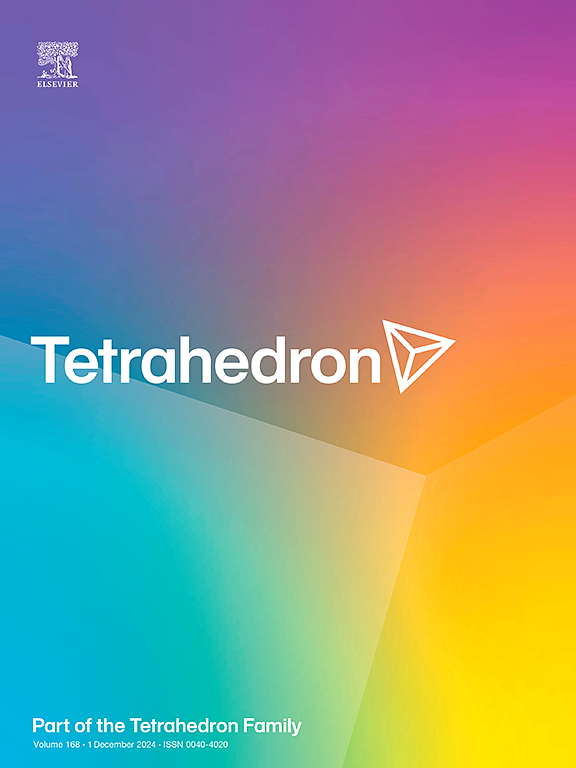螯合膦吡啶胺及其硒化物配体的新型汞(II)金属配合物:合成、表征和x射线结构
IF 2.1
3区 化学
Q2 CHEMISTRY, ORGANIC
引用次数: 0
摘要
4- me - c5h3n -2- nh (PPh2)(1)和单氧化硒基(4- ch3)C6H3N-2-NH(P(Se)Ph2)(2)配体与HgX2 (X = Cl, I)在丙酮中反应得到二聚体配合物[HgCl2]2[{1-κ2P,N}{1-κP}](3)和[HgI2{1-κ2P,N}]2(4),以及[HgX2{2 -κ2P, Npy}] (5, X = Cl;6, X = I)阶导数。利用多核磁共振(1H, 13C和31P)和红外光谱对配合物3-6进行了分离和表征。化合物1和3-6的分子结构通过单晶x射线衍射分析得到。配合物3-6构成了迄今为止鉴定的这些金属汞配体的第一个结构明确的配合物。二聚体3的特点是在单个配合物中存在配位数为5和4的汞(II)金属。本文章由计算机程序翻译,如有差异,请以英文原文为准。

Novel Hg(II) metal complexes of chelating phosphinopyridylamine and its selenide ligands: Synthesis, characterization, and X-ray structures
The reaction of 4-Me–C5H3N–2-NH(PPh2) (1) and monooxidized selenoyl (4-CH3)C6H3N-2-NH(P(Se)Ph2) (2) ligands with HgX2 (X = Cl, I) in acetone yielded the dimeric complexes [HgCl2]2[{1-κ2P,N}{1-κP}] (3) and [HgI2{1-κ2P,N}]2 (4), as well as [HgX2{2-κ2Se,Npy}] (5, X = Cl; 6, X = I) derivatives. Complexes 3–6 were isolated and characterized utilizing multinuclear NMR (1H, 13C, and 31P) and infrared spectroscopy. The molecular structures of compounds 1 and 3–6 were elucidated using single-crystal X-ray diffraction analysis. Complexes 3–6 constitute the first structurally defined complexes of these ligands with mercury metal identified to date. Dimer 3 is distinguished by the presence of Hg(II) metals exhibiting coordination numbers of five and four inside a single complex.
求助全文
通过发布文献求助,成功后即可免费获取论文全文。
去求助
来源期刊

Tetrahedron
化学-有机化学
CiteScore
3.90
自引率
4.80%
发文量
439
审稿时长
34 days
期刊介绍:
Tetrahedron publishes full accounts of research having outstanding significance in the broad field of organic chemistry and its related disciplines, such as organic materials and bio-organic chemistry.
Regular papers in Tetrahedron are expected to represent detailed accounts of an original study having substantially greater scope and details than that found in a communication, as published in Tetrahedron Letters.
Tetrahedron also publishes thematic collections of papers as special issues and ''Reports'', commissioned in-depth reviews providing a comprehensive overview of a research area.
 求助内容:
求助内容: 应助结果提醒方式:
应助结果提醒方式:


